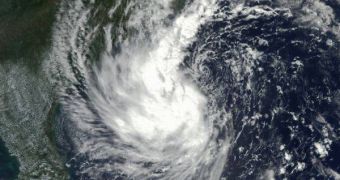Studying ancient rocks, excavated from miles under the Earth's surface, can take geologists to amazing discoveries about the history of our planet, and the way the climate shifted over the billions of years of our history. Therefore, it came as little surprise to investigators when they learned that periods of global warming in history seemed to be accompanied by periods of massive hurricane intensity, such as the one that we have been experiencing over the past ten years. Additionally, the team also found that the weather formations peak every 1,000 years, but that the new period of maximum intensity may be augmented by human-induced climate change.
The area of interest for the new study was the tropical regions of the Atlantic, which exhibited the largest increases in hurricane activity over the last decade. Historical evidence points to the fact that a similar peak was recorded around the year 1000 CE, but that its intensity was a lot more reduced than the current one. As a comparison, 15 Atlantic hurricanes were recorded in 2005 in the Atlantic, as opposed to an average of 8 or 9 a millennium ago. This means, experts say, that other factors must also be at work, and the most plausible explanation at this point is global warming, Nature News informs.
Pennsylvania State University (Penn State) climate scientist Michael Mann is the lead author of a new scientific study on the theme, which appears in the August 12th issue of the respected scientific journal Nature. He believes that a growing warming trend may contribute directly to a rise in hurricane frequencies. Previous climate studies have already revealed the fact that warmer ocean surface temperatures seem to favor the formation of tropical storms. As more and more carbon is emitted into the atmosphere, more sunlight and heat get trapped in, which in turn heat the ground and the water.
Mann also adds that, historically and geologically, the most intense hurricane seasons coincided with times when ocean surface temperatures were higher than normal. “This tells us that the relationship between sea surface temperatures and cyclone activity seems to be robust and gives support to the debate that we are likely to see an increase in tropical cyclone activity in response to global warming,” the climatologist adds.

 14 DAY TRIAL //
14 DAY TRIAL //